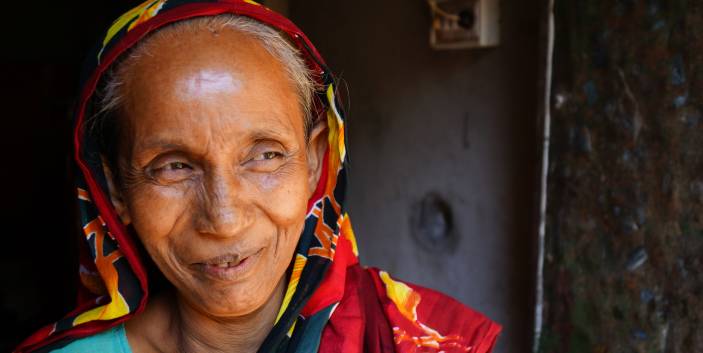
Bangladesh’s long-awaited National Social Security Strategy (NSSS) has been launched – the first life-course approach to policy that will bring more than 30 million people into social safety net programmes.
Intending to reduce extreme poverty, improve development and reduce inequality, the Bangladesh government initiated safety net programmes in the 1990s and they have been gaining momentum since.
Inside the strategy
To ensure Bangladesh meets the new targets set by the Sustainable Development Goals, the government seeks to build on past progress in reducing poverty by addressing the root causes and lessening the impact on vulnerable people.
The NSSS has, therefore, come into effect with the long-term vision of building an inclusive social security system for all Bangladeshis who need it. It aims to effectively tackle and prevent poverty and inequality, while also contributing to wider employment benefits and economic growth.
Over the next five years, NSSS aims to ensure more efficient use of resources, strengthen delivery systems, and move towards social security that tackles risks and prioritises the poorest and most vulnerable members of the society.
In the first year, Tk 337.1 billion (US$4.3 billion) will be committed to begin implementation – this amounts to nearly 2% of the country’s gross domestic product.
Clusters of the strategy
‘Leakage’ has traditionally been a key challenge in implementing safety net programmes – where the money set aside for a programme doesn’t always reach its intended targets. The NSSS aims to stop this by bringing in all 145 social safety net schemes under a comprehensive programme of five age clusters that cover the whole life course.
The clusters are: young children (below the age of 4), school-age children, working-age people, the elderly, and, lastly, people with disabilities.
Currently only three million older people are covered by the social pension scheme. The new strategy will increase this to 5.5 million.
Schemes for older people
In addition to social pensions, the government will introduce a mandatory pension scheme for the private sector under NSSS, helping to spread the costs of implementing the programmes between public and private funds.
The first tier is the citizens’ pension scheme. Through this, poor and vulnerable people aged over 60 years of age will receive Tk 500 (US$6.40) per month and those of 90 years and above Tk 3,000 (US$38.40). The plan is to extend the existing scheme under the new system.
The second tier involves a contributory pension scheme for formal sector workers, and is a new concept the state is exploring.
Voluntary, often employment-based pension schemes managed by the private sector make up the third tier. These are opt-in for people who want to save more for their retirement.
With its different tiers and clusters, NSSS may seem complex, but its implementation is vital to provide a safety net to millions of Bangladeshis. What’s more, the country would not be able to follow through on its commitments set out in the Sustainable Development Goals to achieve substantial coverage for the poor and vulnerable by 2030 without the strategy. Let’s hope its delivery is a success.
Find out more:
- Explore our work in Bangladesh.
- Read about social protection.
